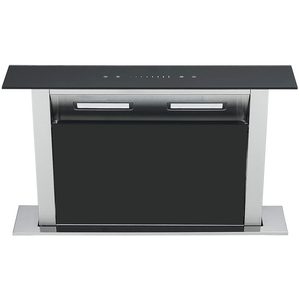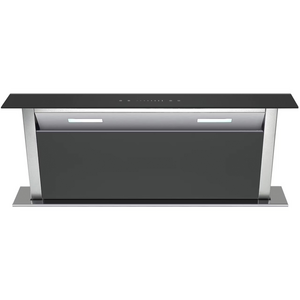How do downdraft cooker hoods work?
A downdraft cooker hood works by extracting cooking fumes, smoke, and odours downwards rather than upwards like a traditional overhead extractor. These systems are designed to be installed behind or beside a hob, often on an island or against a wall, and remain hidden within the worktop when not in use.
How It Works
Retractable Mechanism
- When activated, the downdraft extractor rises from the worktop, typically at the push of a button or via touch controls.
- Some models have a fixed, flush-mounted vent alongside the hob instead of a retractable system.
Extraction Process
- The built-in motor draws in steam, smoke, and cooking odours horizontally from the hob.
- The air is either vented outside through ducting or recirculated back into the kitchen after passing through carbon filters.
Filtration System
- Grease filters trap oil and grease particles, preventing buildup in the kitchen.
- Carbon filters (for recirculating models) help remove odours before releasing clean air back into the room.
Discreet Storage
- When switched off, the extractor lowers back into the worktop, making it invisible and maintaining a sleek kitchen design.
Key Benefits
- Space-Saving: Ideal for open-plan kitchens or islands without overhead units.
- Aesthetic Appeal: Maintains a clutter-free look when not in use.
- Flexible Installation: Suitable for kitchens where ceiling or wall-mounted extraction isn’t practical.
Limitations to Consider
- Less Effective for High Steam Output: Since steam naturally rises, downdraft systems may struggle with boiling pans at full power.
- Requires Adequate Venting Space: Ducted models need sufficient space for underfloor or wall ducting.
Downdraft extractors are a stylish and practical solution for modern kitchens, but their effectiveness depends on factors such as hob placement, room ventilation, and cooking habits.

